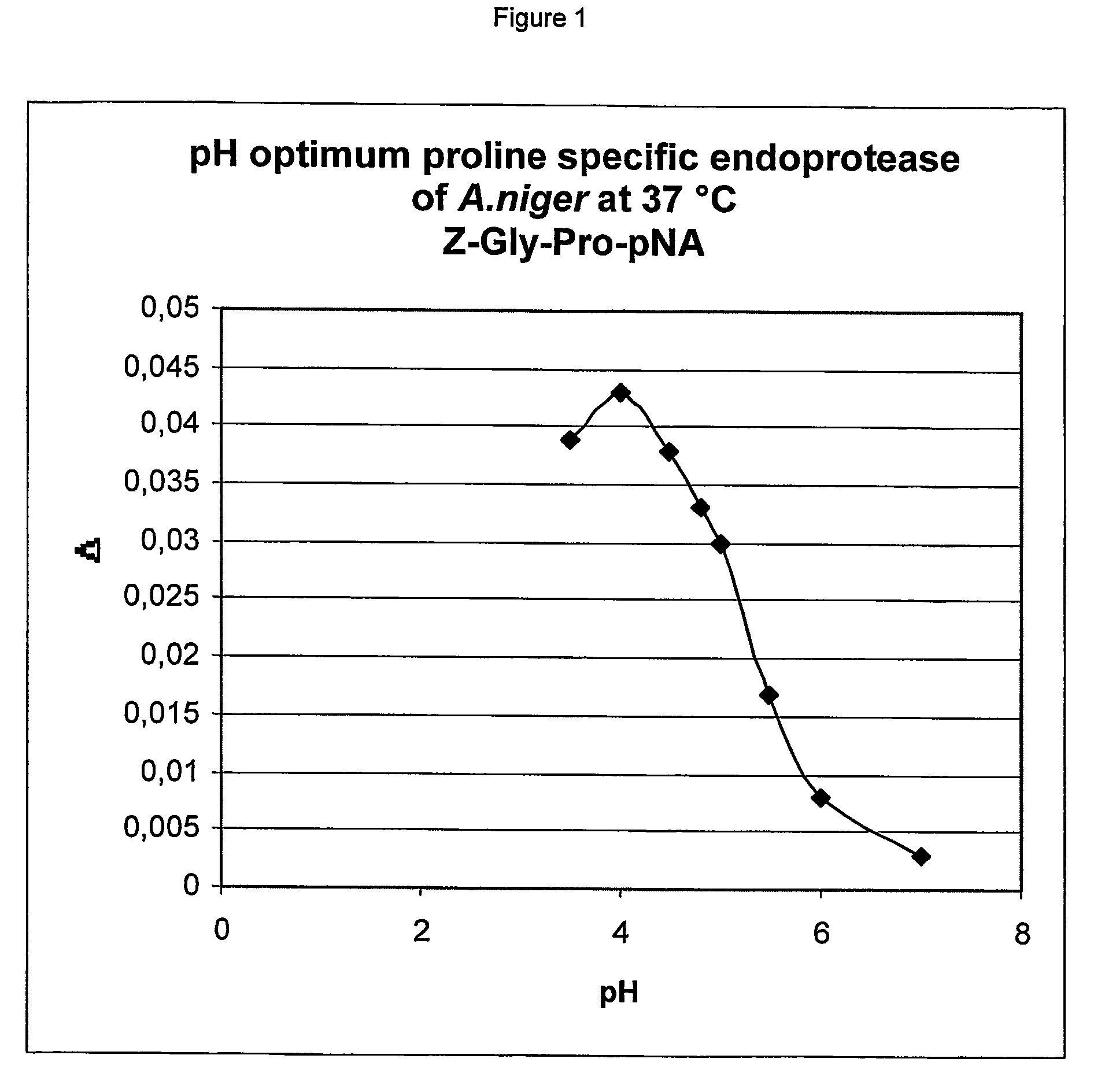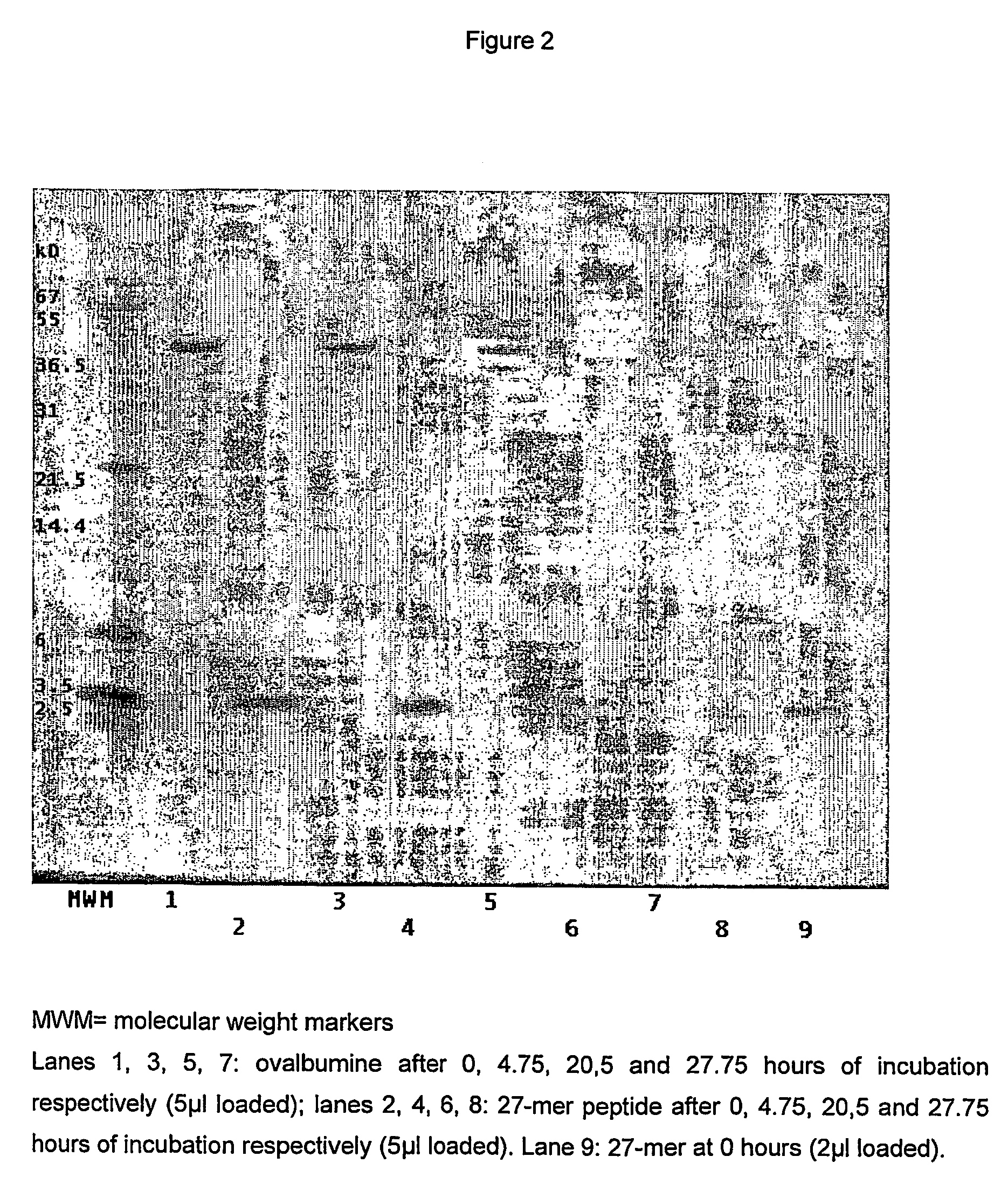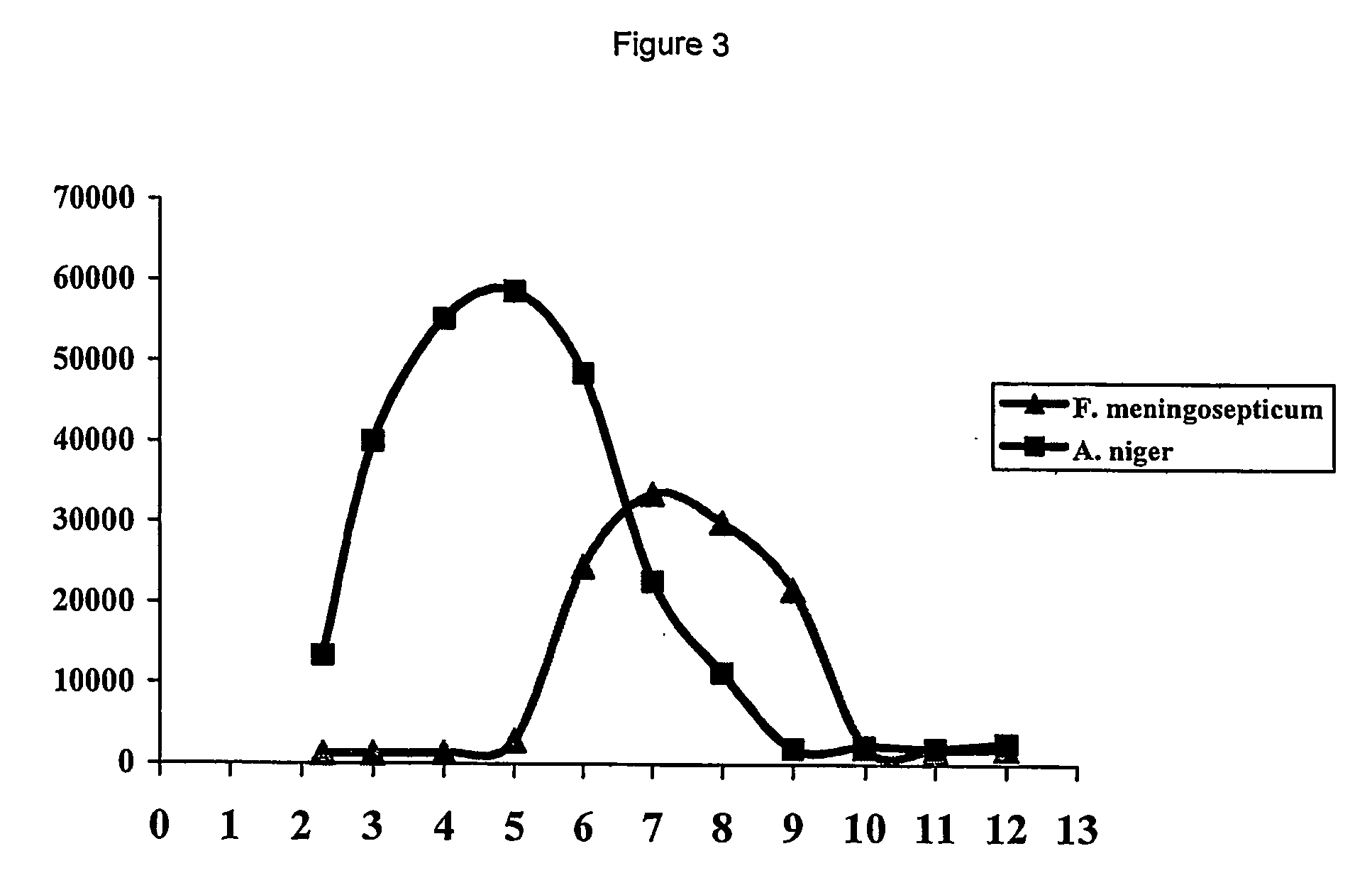Use of proline specific endoproteases to hydrolyse peptides and proteins
- Summary
- Abstract
- Description
- Claims
- Application Information
AI Technical Summary
Benefits of technology
Problems solved by technology
Method used
Image
Examples
example 1
The pH and Temperature Optima of the Proline Specific Endoprotease as Obtained from A. niger
[0094] The A. niger derived proline specific endoprotease was overexpressed in an A. niger host, isolated and chromatographically purified using the materials and methods described in WO 02 / 45524. To establish the pH optimum of the thus obtained enzyme, buffers with different pH values were prepared. Buffers of pH 4.0-4.5-4.8-5.0-5.5 and 6.0 were made using 0.05 mol / l Na-acetate and 0.02 M CaCl2; buffers of pH 7.0 and 8.0 were made using 0.05 M Tris / HCl buffers containing 0.02 M CaCl2. The pH values were adjusted using acetic acid and HCl respectively. The chromogenic synthetic peptide Z-Gly-Pro-pNA was used as the substrate. The buffer solution, the substrate solution and the prolyl endoprotease pre-dilution (in an activity of 0.1 U / mL), were heated to exactly 37.0° C. in a waterbath. After mixing the reaction was followed spectrophotometrically at 405 nm at 37.0° C. for 3.5 min, measuring ...
example 2
The Enzyme as Obtained from A. niger Represents a New Class of Proline Specific Enzymes
[0097] From the entire coding sequence of the A. niger derived proline specific endoprotease as provided in WO 02 / 45524 a protein sequence of 526 amino acids can be determined. The novelty of the enzyme was confirmed by BLAST searches of databases such as SwissProt, PIR and trEMBL. To our surprise, no clear homology could be detected between the A. niger enzyme and the known prolyl oligopeptidases. Closer inspection of the amino acid sequence, however, revealed low but significant homology to Pro-X carboxypeptidases (EC3.4.16.2), dipeptidyl aminopeptidases I (EC3.4.14.2), and thymus specific serine protease. All of these enzymes have been assigned to family S28 of serine peptidases. Also the GxSYxG configuration around the active site serine is conserved between these enzymes and the A. niger derived endoprotease. Additionally, members of family S28 have an acidic pH optimum, have specificity for...
example 3
The A. niger Derived Proline Specific Endoprotease can Hydrolyse Large Proteins as Well as Small Peptides and is Thus a True Endoprotease
[0098] Owing to a specific structural feature, prolyl oligopeptidases belonging to the S9 family cannot digest peptides larger than 30 amino acids. This limitation is an obvious disadvantage for an enzyme, which is meant to hydrolyse as quickly and as efficiently as possible all potential proline rich toxic proline rich peptides. To see if the A. niger derived proline specific endoprotease exhibits the same limitations with respect to the size of the substrate molecule, we have incubated the chromatographically purified prolyl endopeptidase from A. niger with a small synthetic peptide and with the large ovalbumine molecule and have analysed the hydrolysis products formed by SDS-PAGE. The synthetic peptide used was a 27-mer of the sequence NH2-FRASDNDRVIDPGKVETLTIRRLHIPR-COOH and was a gift of the Pepscan company (Lelystad, The Netherlands). As sho...
PUM
| Property | Measurement | Unit |
|---|---|---|
| Fraction | aaaaa | aaaaa |
| Fraction | aaaaa | aaaaa |
| Fraction | aaaaa | aaaaa |
Abstract
Description
Claims
Application Information
 Login to View More
Login to View More - R&D
- Intellectual Property
- Life Sciences
- Materials
- Tech Scout
- Unparalleled Data Quality
- Higher Quality Content
- 60% Fewer Hallucinations
Browse by: Latest US Patents, China's latest patents, Technical Efficacy Thesaurus, Application Domain, Technology Topic, Popular Technical Reports.
© 2025 PatSnap. All rights reserved.Legal|Privacy policy|Modern Slavery Act Transparency Statement|Sitemap|About US| Contact US: help@patsnap.com



